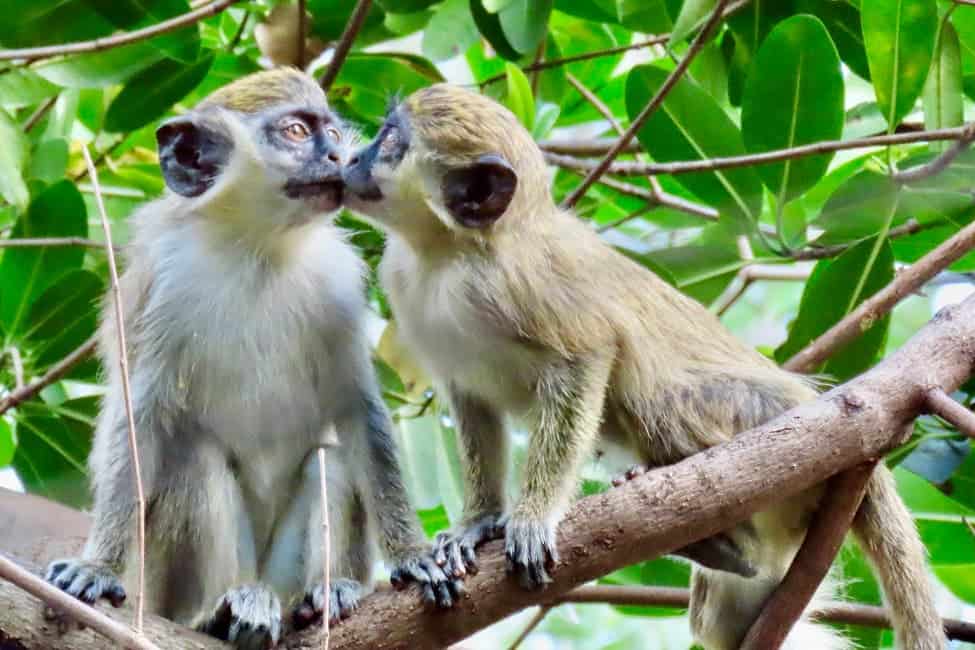
For over seven decades, a colony of green monkeys (Chlorocebus sabaeus) has been living in urban South Florida, close to where jets take off from a nearby airport. Although Dania Beach locals love them, no one was quite sure how they got there.
Now, researchers at Florida Atlantic University (FAU) claim they’ve traced the colony origin to the Dania Chimpanzee Farm jailbreak.
In 1948, several dozen monkeys escaped from the Dania Chimpanzee Farm. Most of them were recaptured, but some disappeared into a mangrove swamp between Port Everglades and Fort Lauderdale airport. Their descendants, about 41 in number, still live there today, according to the researchers who performed genetic analyses on feces samples, as well as tissue samples from monkeys killed by vehicles or power lines.
“Through interviews, historical archives, and popular media, we traced the monkeys to an escape from the Dania Chimpanzee Farm in 1948,” wrote the authors of the new study published in the journal Primates. “The facility imported primates from Africa for medical research purposes.”
This species, also known as the vervet monkey, is commonly referred to as a green monkey because of the color of its fur. Green monkeys are endemic to West Africa, ranging from Senegal and west Guinea-Bissau into Ghana.
The monkeys spend their days on a 1,500-acre plot of mangrove forest wedged between oil storage tanks, the port, and the Federal Highway. Their diet consists of red palm seeds, sea grapes, and lizards, along with the bananas, mangos, nuts, and other goodies offered by humans working or living nearby.
The genetic examination also revealed that before being brought to Florida, the colony’s forebears came from Africa. After these original members were brought to Dania Chimpanzee Farm, they were mainly sold for medical and military research, which was booming in the post-WWII era. For instance, Dr. Jonas Salk and Dr. Albert Sabin experimented on the monkeys for polio research while Johns Hopkins University used them to investigate tuberculosis.
But regardless of where they came from, the monkeys are now an integral part of the local community.
“The community still loves them,” said Deborah “Missy” Williams, lead author of the study, who is in the FAU biological sciences department. “They care for them. They want them protected.”
Unfortunately, the long-term prospect of the colony looks bleak. Computer modeling suggests that the population will collapse and go extinct within 100 years.
Williams is one of the founders of the Dania Beach Vervet Project, whose mission is to protect the Florida monkeys and raise money to buy land for a sanctuary.
Besides green monkeys, Florida is home to two other introduced, free-ranging primates: Saimiri sciureus (squirrel monkey) and Macaca mulatta (rhesus macaque).









